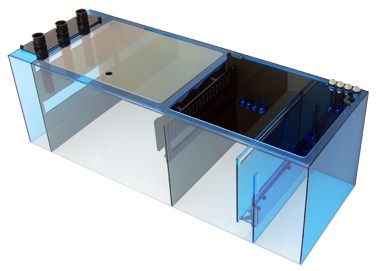BFCM 30% OFF ALL LIVE FEEDS
Every live feed is 30% off—Tisbe, Apocyclops, Rotifers, Phyto, and more. Limited-time BFCM deal!

No water Changes?! What? Triton can make it possible
Hey fellow reef nerds! Today I wanted to jump into a subject that can be extremely debated among hobbyists as of the past year or so: Water changes.
So there has been some reefers that have completely sworn off water changes. That’s crazy, right?! Water changes are one of the fundamental backbones of reef keeping. Well, it has been happening, and it is definitely against the grain of mainstream thinking in the hobby. The main reasoning behind this “no water change methodology” is aquarium stability. Now, I must say, I have been guilty of this methodology in my own personal aquariums for the past couple of years. There is one major issue with this methodology and that is trace minerals. They become depleted, and they need to be added back in to the closed system. I can say that at about a year into the tank being setup, I started to have some major problems occurring in the tanks. I was getting algae breakouts and having coral discolorations, among other issues. I still attribute this to major chemical imbalances with the trace minerals in the aquarium. Quite frankly, this can be stressful on all the inhabitants, even down to the tiniest foundational PODs in the aquarium. That being said, I wouldn’t recommend doing this without some additional plan.
Enter the Triton method. Fundamentally, the Triton method is centered around macro-algae in as a means to reduce nutrients. This is one of the main differences between Triton systems as opposed to Zeovit systems that do not use macro-algae at all. Another difference is that the sump is setup slightly different than normal. Water will flow down to the sump, no filter socks are used, and then will be dumped into refugium/macro-algae. From there, water flows to the skimmer and then the return pump to be sent back to the tank. By setting up sump in this manner, the tank water comes into contact with the macro algae first, primarily to ensure that the algae is given water that hasn’t been stripped by the skimmer. Now you may be thinking, what about my POD population? Won’t the skimmer pull them out before they are able to make it back to main tank? Well sure, maybe some are sucked into the skimmer and end up skimmate, but the majority will flow through the sump chamber and to the main tank, and possibly even flow through the skimmer body itself, and out the exit of the skimmer then back to the main tank. So please, do not hesitate to add additional POD population to the tank if you are running Triton, they will be fine and will continue to flourish. I mean, when is the last time you poured out skimmate and saw a bunch of PODs fall out of it….?
Another foundational element of the Triton system is that you add the missing trace elements or those that are low. Mainly, these elements are stripped out of the water column by the corals and the algae. This is done by first sending off a sample of your water at specific intervals to be tested by ICP-OES or inductively coupled plasma optical emission spectrometry. That was a mouthful, but it basically just tests for all the elements in the aquarium. You then supplement with their products to “fix” any imbalances. This comes in roughly 10+ different supplements. All this in the hope to mimic natural seawater parameters, not just on a macro element basis, but also on a micro element basis. I personally think that it is a lot of work to add that many supplements, but others swear by the simplicity of the system.
Stability is the key to success with any reef aquarium, and how you get there is really up to you. One thing is for certain, a healthy POD population made up of a variety of species is a critical foundational piece to a heathy reef aquarium.
It doesn’t matter whether you are running Zeovit, Triton, your own methodology, success will always come down to consistent husbandry.
Until next time…
About the author:
